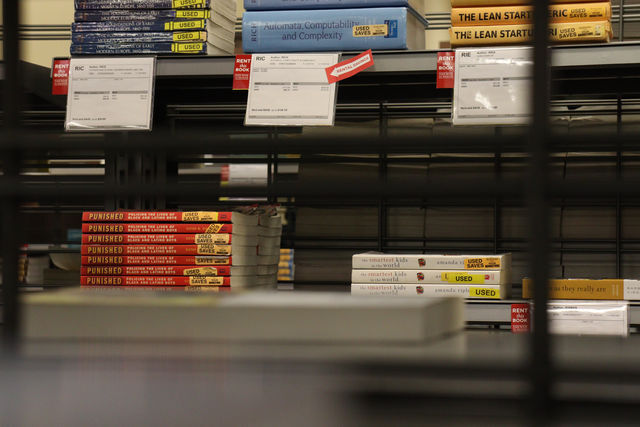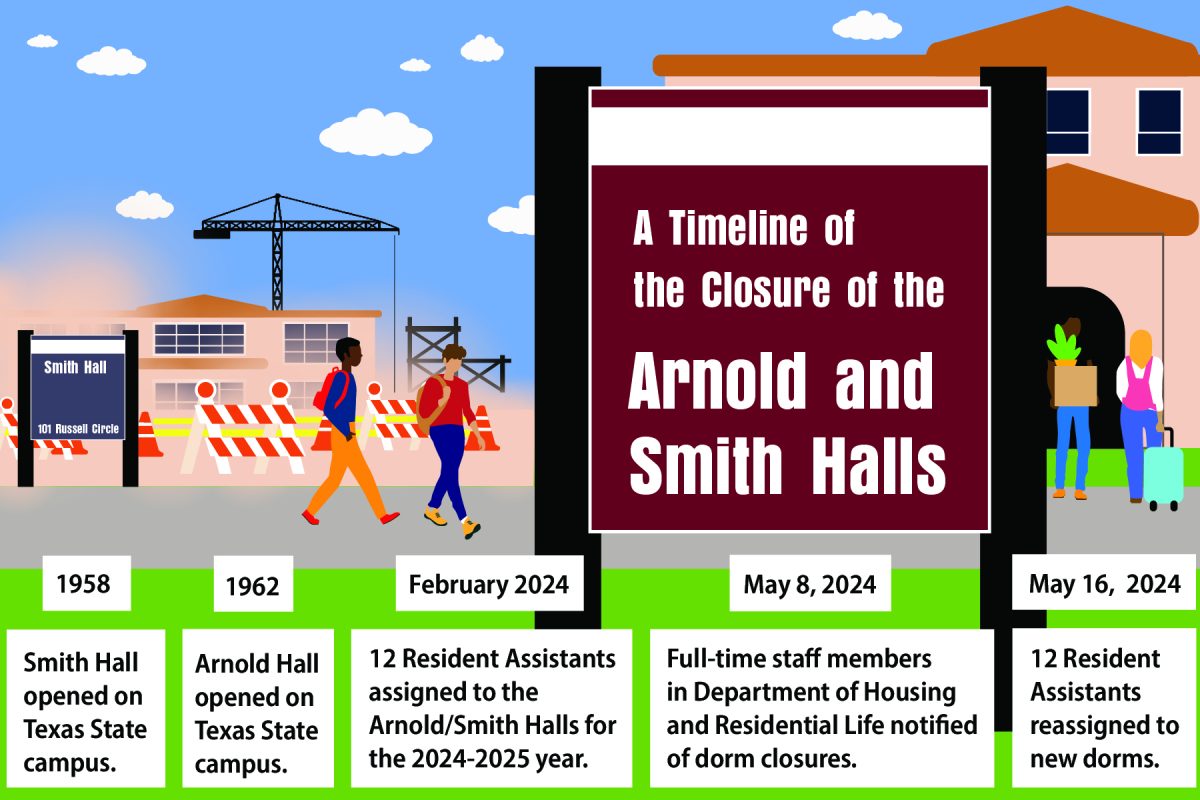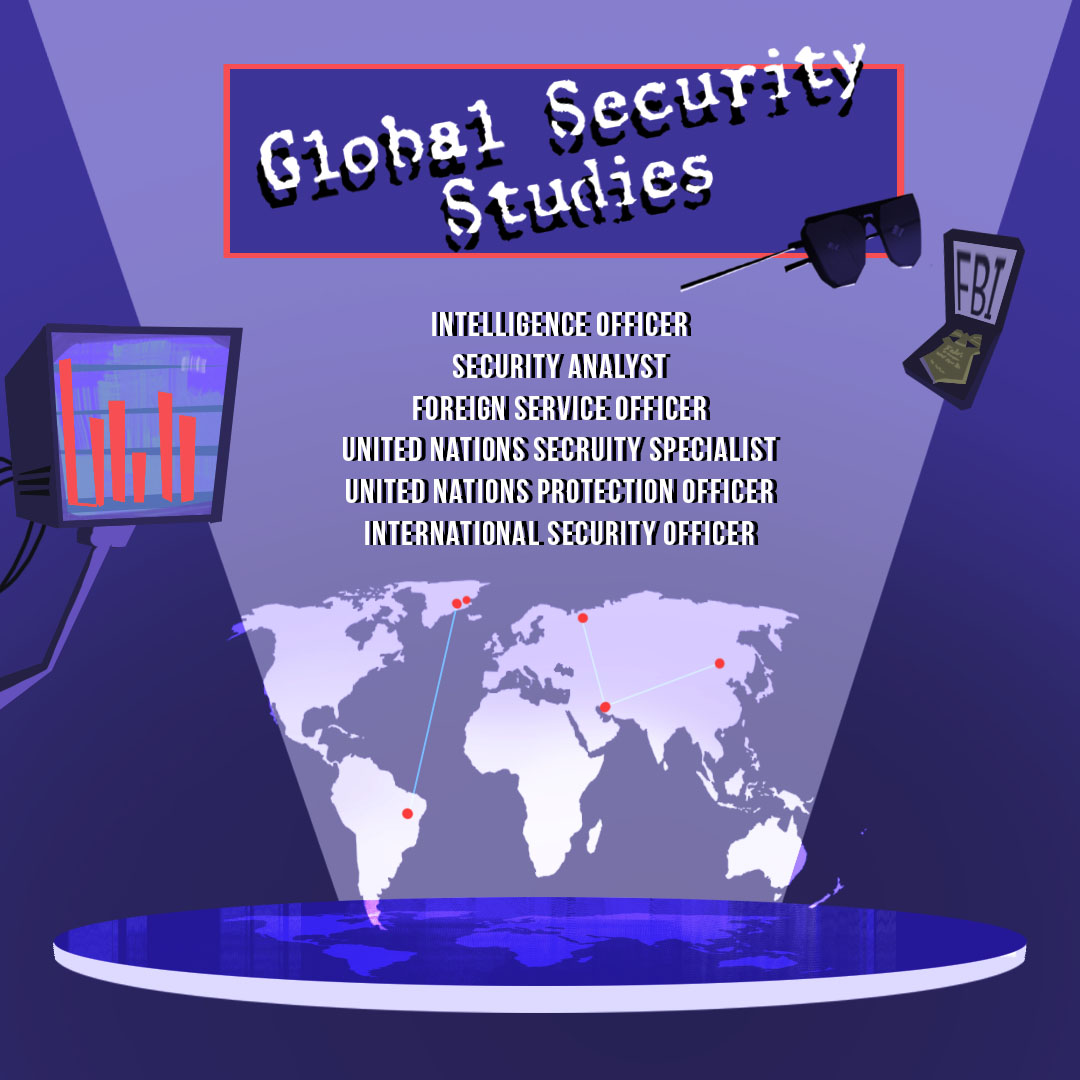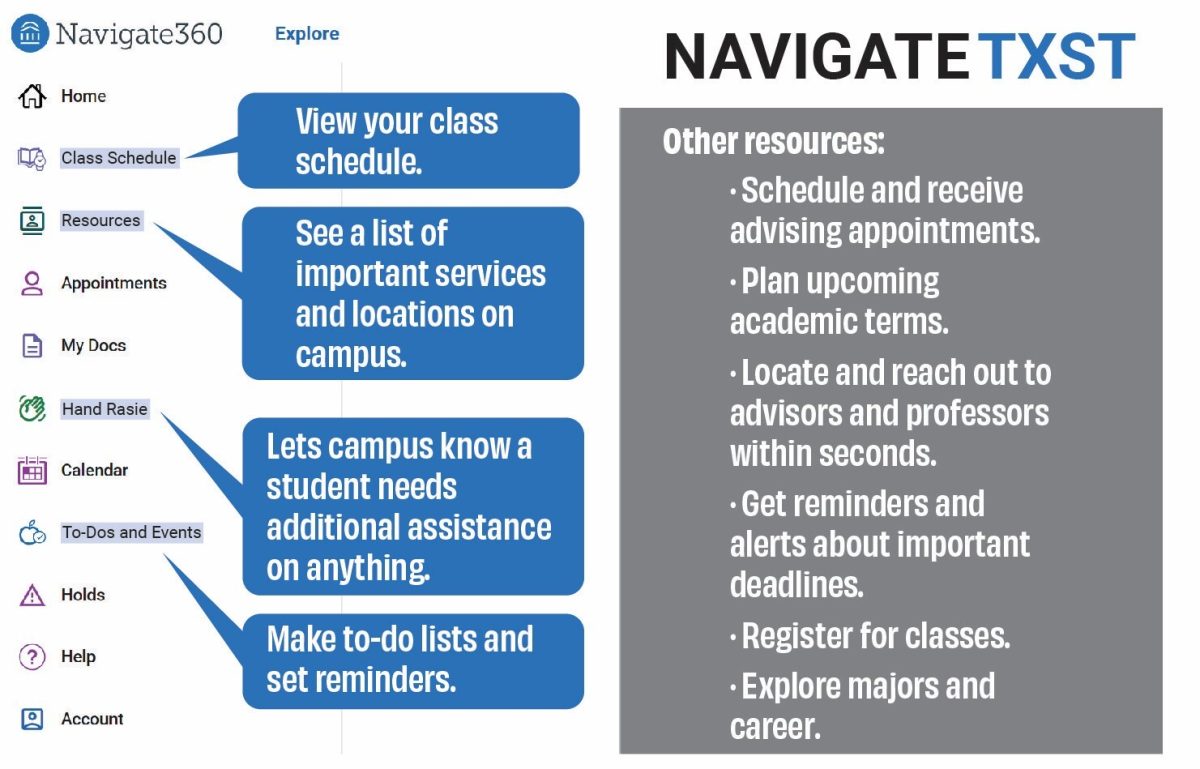To help push efforts to lower the overall cost of course materials, Texas State created a task force that specifically focuses on managing the prices of textbooks.
Texas State Provost and Vice President for Academic Affairs Gene Bourgeois appointed a university-wide committee, the Managing Textbook Cost Committee, consisting of faculty members, students and representatives from the Alkek Library and Auxiliary Services, in response to the increasingly high costs of learning materials and the lack of transparency regarding the full cost of courses.
The committee is co-chaired by Dr. Vedaraman Sriraman, associate vice president for Academic Affairs, and Dana R. Willett, assistant vice president for the Office of Distance and Extended Learning.
“It’s a student success issue,” Sriraman said. “Students often decide to either not buy the book at all, or delay purchasing the book, which in turn impacts their performance in the course and inhibits their academic success.”
Sriraman says managing the costs of learning materials is imperative for Texas State due to the cost of attendance heavily impacting students.
“[Managing the costs of learning materials is] particularly important for our institution because we have a high first-gen population as well as a high number of students that are Pell-eligible, as well as quite a few veterans,” Sriraman said.
MTCC has looked into the Affordable Learning Georgia initiative, a similar initiative to what Texas State is working to achieve. Researchers of the program reported students saving approximately $760,000 in learning material expenses.
In March, the committee sent a survey to 7,000 students at Texas State, receiving 275 responses. Survey results show that 71% of respondents spent $299 or less on textbooks, 22% spent $300-$499 and 4% spent more than $500. Two respondents reported spending over $900 on required course materials, a nursing undergraduate student and a master’s student who did not identify a program.
In the first year of operation, the committee focused on meeting with different groups on campus and spreading awareness on the issue. Through these efforts, it has garnered the support of both the Student Government and Faculty Senate. To ensure all issues with the initiative are addressed, Sriraman says the MTCC has outlined its goals in three parts.
“First and foremost, our primary goal is affordable learning materials as that is directly tied to student success,” Sriraman said. “Second is academic freedom, which is the freedom that faculty have to choose the appropriate material for their courses as we don’t want to tell them what materials to choose, and third is providing quality academic materials.”
Willett says the initiative has been well-received due to the committee’s commitment to addressing the multiple facets of the issues high-priced learning materials bring to the table.
“We recognize that it’s not just an economic issue, it’s a student success issue and a social justice issue, and we’re working very hard to address all of these components through both long-term and short-term objectives,” Willett said.
The MTCC is working toward a flagging system in class registration that would highlight classes that use affordable learning materials. Willett says the committee hopes this can be implemented by fall 2021.
“It will allow students to zero right in on courses with affordable learning materials and enroll in them,” Willett said. “It would make finding these classes very easy.”
Sriraman says the committee is primarily focused on lowering the costs of learning materials for core curriculum classes first, as they believe it would be the best way to begin implementing the initiative.
Matthew Gonzales, a public administration major and student representative on the MTCC, is calling for the student body to support the committee’s initiatives, saying if there is a lack of student representation, the goals of the MTCC will be much more difficult to accomplish.
“The most valuable thing coming out of this initiative is honestly an academic community that has a goal of more open education with not only professors’ research, but the desire to build a curriculum that fits everyone, students included,” Gonzales said.
Carmen Gonzales, a senior psychology major, has experienced paying a large amount for a general course.
“The most I’ve spent on textbooks was about $120-$150, and it was for one of the first classes I ever took in college,” Gonzales said. “It was definitely jarring, especially because most of that was spent paying for the homework materials, which I feel should have been included in the cost of the course.”
Gonzales says she thinks the MTCC could do a lot of good for students with financial troubles and for those who are adjusting to the college experience.
“I’m happy people are advocating for cheaper course materials,” Gonzales said. “Especially for those who are really struggling, it could really help ease the financial burden and stress of college for them.”
Ana Gaona, a junior and communication disorders major, shares a similar sentiment and believes expensive course materials should not be something students should have to worry about.
“Last year I spent about $150 for one of my courses, and I felt it was ridiculous that I was spending so much for just one course when I still had to buy materials for four more,” Gaona said. “I’m glad there’s finally going to be an initiative to lower costs of materials. It’s been a problem for a long time, and it only seems to be getting worse, so it’s time to do something about it.”
Although there have been steps toward providing affordable learning materials and making the Texas State community aware of the issue at hand, Willett says the MTCC has some time before meeting its goals. She says the MTCC is the first of its kind at Texas State and the first significant push toward addressing the prices of learning materials.
“This is a pretty long-term project,” Willett said. “We’re still at the very beginning stages of this. Although faculty have been working on it for a long time, the work of this particular committee is just getting off the ground.”
Texas State takes steps toward providing affordable learning materials
Textbooks available to purchase or rent sit on the shelves of the University Bookstore, Wednesday, Oct. 28, 2020, in the LBJ Student Center. The university has created the Managing Textbook Cost Committee to work to lower the cost of textbooks and other learning materials for students.
Your donation will support the student journalists of Texas State University. Your contribution will allow us to purchase equipment and cover our annual website hosting costs.
























